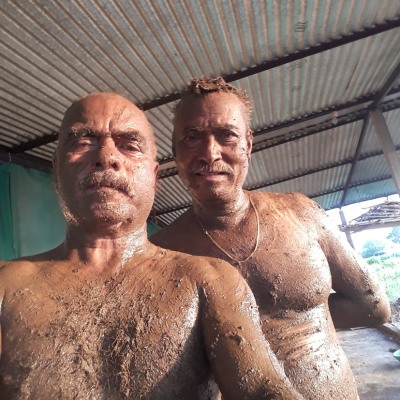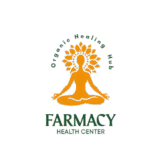Mud therapy—also known as pelotherapy or mud bath therapy—has stood the test of time, celebrated across ancient civilizations and embraced in modern wellness trends. Whether applied as a muddy wrap, soak, or mask, it remains a striking example of how nature holds secrets to healing that modern medicine is only beginning to understand.

A Historical Soak into Wellness
Across cultures—from the Egyptians and Romans to Ayurvedic practitioners—mud has been a trusted healer. The ancient Egyptians and Romans used mud to draw out skin impurities and calm the body. Ayurvedic traditions also embraced earth’s healing power for balancing bodily elements Woman & HomePrakriti Vedawellness.
Even today, practices like fango (thermal mud wraps) and balneotherapy persist in spas worldwide, linking modern relaxation with ancient roots Wikipedia+1.
Science-Backed Benefits
Mud therapy isn’t just folklore—it’s supported by increasing research, particularly in managing musculoskeletal disorders like osteoarthritis (OA).
-
- Pain Relief in Knee Osteoarthritis
A 2013 meta-analysis of randomized controlled trials found significant reductions in pain scales for patients treated with mud therapy compared to control groups PubMed.
- Pain Relief in Knee Osteoarthritis
-
- Enhanced Quality of Life & Reduced Medication
In a clinical trial, patients undergoing multiple sessions of mud therapy experienced noticeable improvements in perceived health, bodily pain, and reduced reliance on medication compared to those receiving standard treatment PubMed.
- Enhanced Quality of Life & Reduced Medication
-
- Long-Term Benefits Over Standard Rehabilitation
A 2025 systematic review of 40 trials suggested that mud and mineral water therapies often resulted in more enduring improvements in pain, stiffness, and mobility vs conventional rehab PubMed.
- Long-Term Benefits Over Standard Rehabilitation
-
- Inflammation Modulation
Studies on rheumatoid arthritis, ankylosing spondylitis, and other rheumatic conditions show mud baths can reduce inflammatory markers (like IL-1β) and elevate anti-inflammatory cytokines (like IL-10), with benefits lasting months after treatment Verywell Health.
- Inflammation Modulation
-
- Mechanisms at the Biochemical Level
Research into peat-based mud shows hormonal changes and reductions in pro-inflammatory mediators, contributing to pain relief in conditions like plantar fasciitis and psoriasis Wikipedia.
- Mechanisms at the Biochemical Level
Holistic Benefits: Beyond Joints
Mud therapy’s appeal extends into skincare, stress relief, circulation, and digestion—areas where anecdotal and smaller-scale evidence shine.
-
- Skin Rejuvenation & Detoxification
Mineral-rich muds, often sourced from volcanic or mineral spring origins, help absorb impurities, exfoliate dead cells, and nourish skin with silica, magnesium, and calcium—promoting hydration, clearer skin, and relief from acne, eczema, and psoriasis Urban CompanyHealicRishikesh Nathyog Shala.
- Skin Rejuvenation & Detoxification
-
- Circulation & Muscle Relaxation
Warm mud encourages vasodilation, improving blood flow and aiding nutrient delivery, which soothes muscle tension and enhances overall physical vitality Urban CompanyDriswarya’s Nature Cure.
- Circulation & Muscle Relaxation
-
- Stress Reduction & Mental Calm
The sensory experience of mud baths—earthy, warm, enveloping—can soothe the nervous system, relieve anxiety, and induce relaxation Urban CompanyDriswarya’s Nature CureThe Times of India.
- Stress Reduction & Mental Calm
-
- Digestive Support
Abdominal mud packs are believed in naturopathy and Ayurveda to gently stimulate digestion, reduce toxins, and improve metabolism CredihealthRishikesh Nathyog Shala.
- Digestive Support
-
- Eye Health & Cooling Relief
Traditional wisdom suggests mud applied around the eyes eases strain, reduces inflammation, and may support eye wellness—especially beneficial for screen-weary eyes The Times of India.
- Eye Health & Cooling Relief
Mud Therapy Today: Wellness Meets Science
Despite its ancient roots, mud therapy has found new relevance in wellness spaces. The 2025 article noting ancient practices still popular today highlights that mud therapy continues to be valued for its holistic benefits across cultures and time Woman & Home.
Wise Practices & Precautions
To maximize benefits and stay safe, here are key considerations:
-
- Use Clean, Mineral-Rich Mud
Always choose mud from uncontaminated sources—like volcanic clay, Moor mud, or Dead Sea mud—and ensure it’s free from pesticides or pollutants Verywell HealthDriswarya’s Nature CureWikipedia.
- Use Clean, Mineral-Rich Mud
-
- Mind Temperature Control
Mud shouldn’t be too hot or cold—moderate warmth enhances absorption without risking skin irritation or shock Driswarya’s Nature Cure.
- Mind Temperature Control
-
- Patch Test for Sensitivities
Apply a small amount to test for allergies or reactions, especially for those with skin conditions or open wounds Driswarya’s Nature CureHealic.
- Patch Test for Sensitivities
-
- Avoid During Active Infections or Heavy Food
Refrain from undergoing mud therapy when sick, immediately after a meal, or if body is highly inflamed Driswarya’s Nature Cure.
- Avoid During Active Infections or Heavy Food
-
- Consider Frequency
Most treatments span several sessions—ranging from a few weeks to a month—to assess effectiveness, especially for skin or pain conditions HealicDriswarya’s Nature Cure.
- Consider Frequency
Real-World Voices
Beyond clinical studies, personal accounts offer touching glimpses:
One Reddit user shared healing from topical steroid withdrawal using Dead Sea mud, describing how daily baths over weeks brought significant relief and clarity—though cautioning that results may vary Reddit.
Another recounting described skin flare-ups being soothed post-Mud application, noting a calming and healing effect—even if deeper healing was uncertain Reddit.
Why Mud Therapy Matters
Mud therapy exemplifies alternative healing that touches multiple facets of well-being:
-
- Integrative: Bridges mind, body, and skin health in one treatment.
-
- Non-invasive: Offers relief with minimal risk compared to pharmaceuticals.
-
- Nature-driven: Reconnects us to Earth’s therapeutic potential.
-
- Complementary: Enhances, rather than replaces, conventional care—especially for chronic conditions.
Conclusion
From ancient spa rituals to modern integrative wellness, mud therapy continues to thrive—blending sensory indulgence with physiological benefits. Evidence-backed gains in pain relief, skin health, and emotional calm, combined with safety and simplicity, make it a compelling addition to self-care routines.
As always, while its benefits are promising, mud therapy should complement—not substitute—professional medical advice. Start small, choose the right type of mud, and listen to your body.
